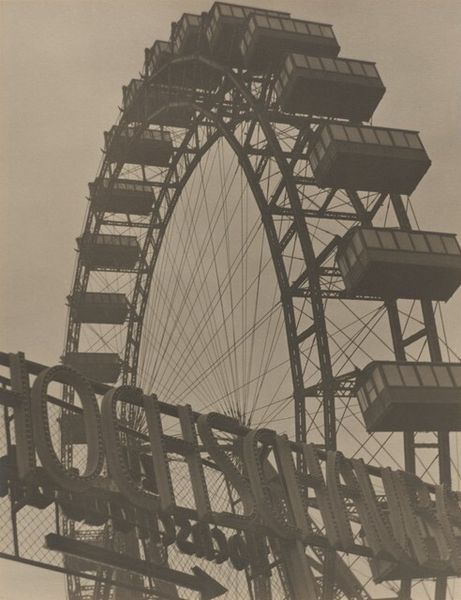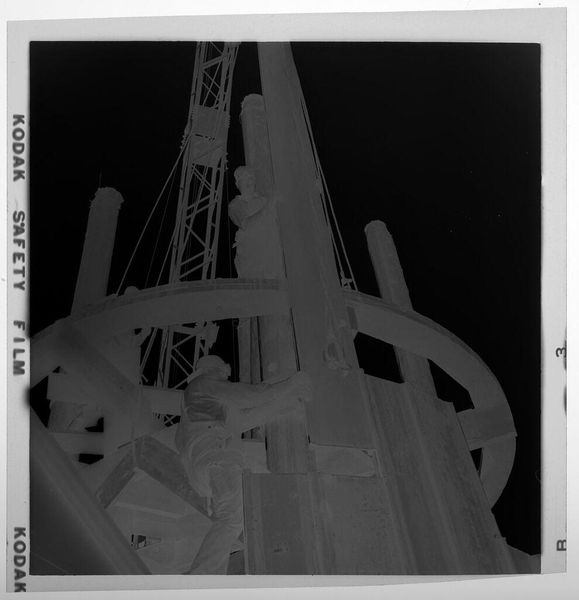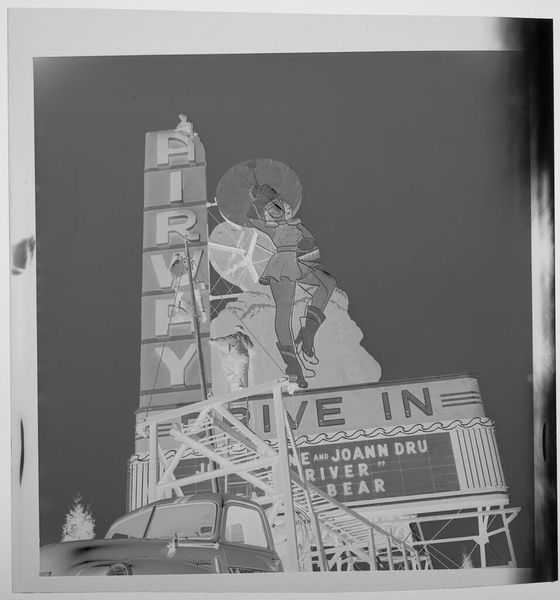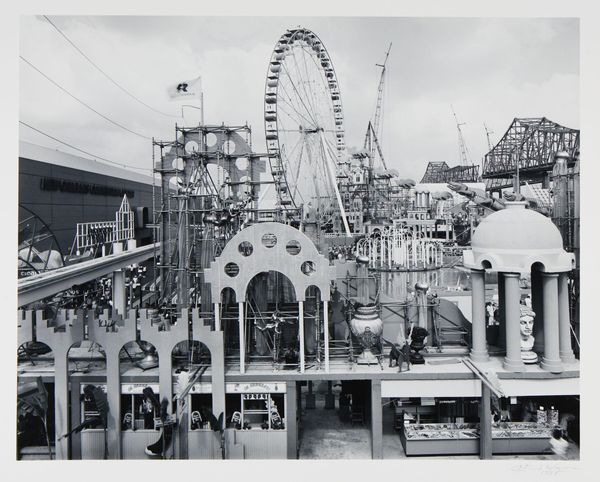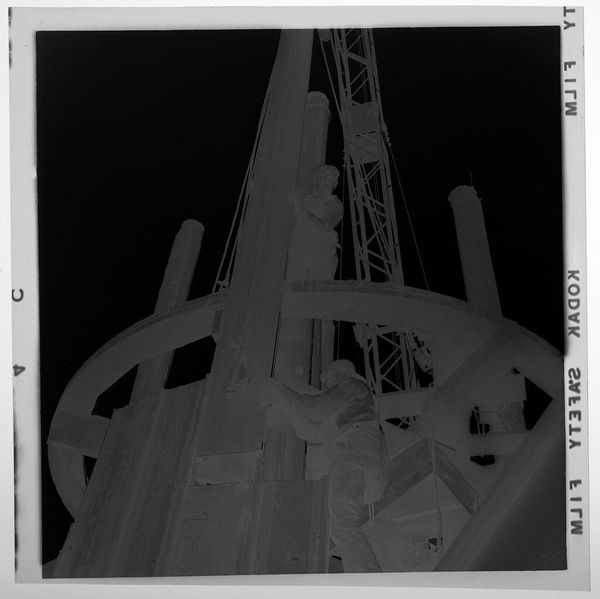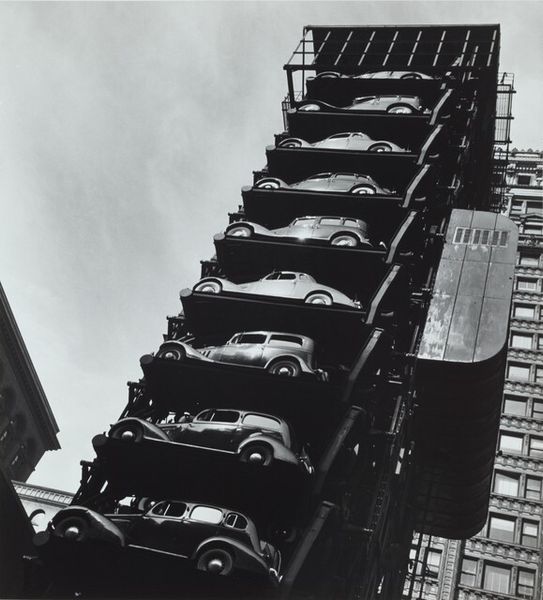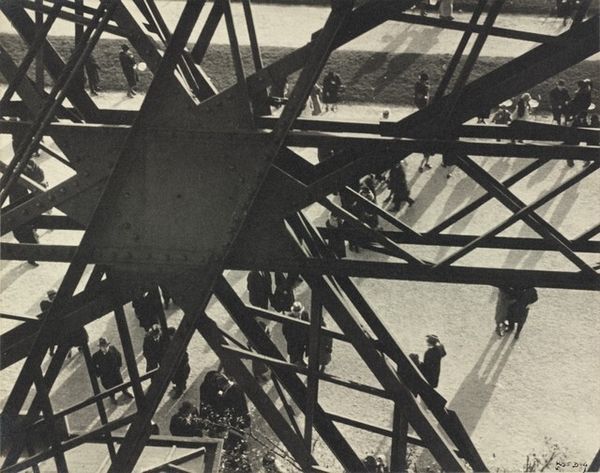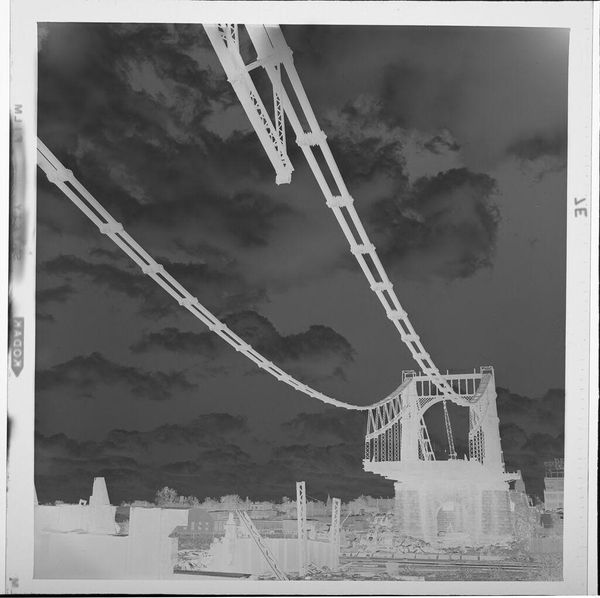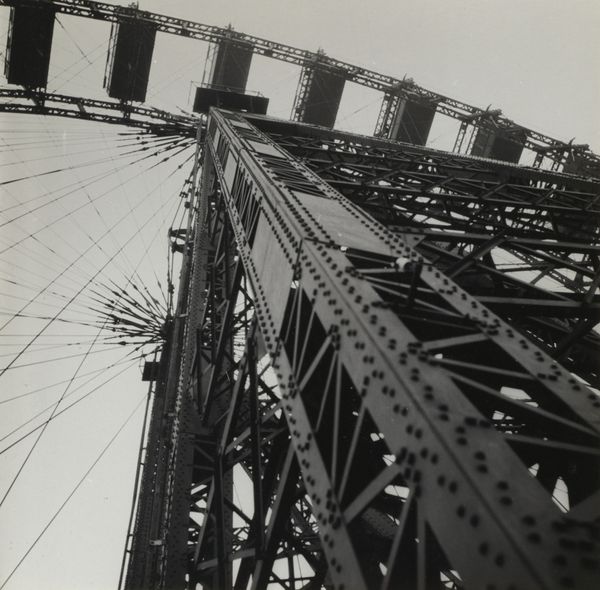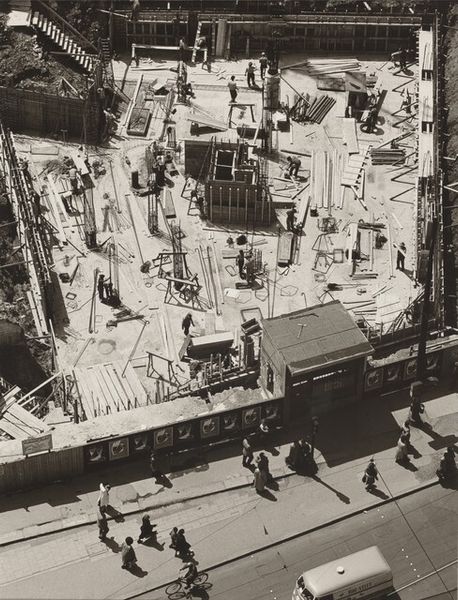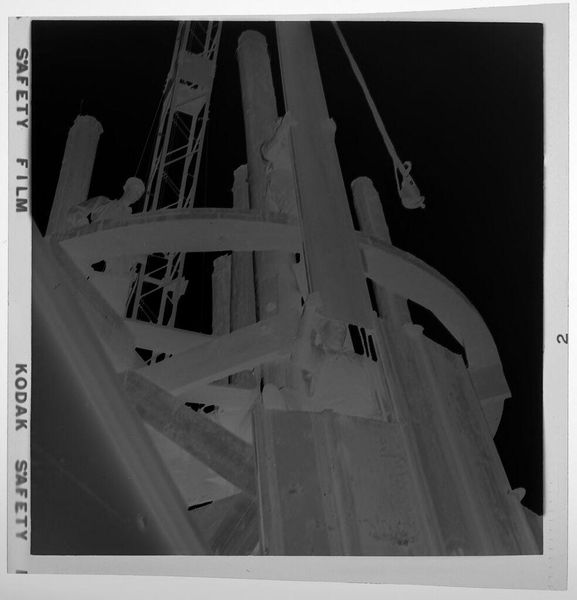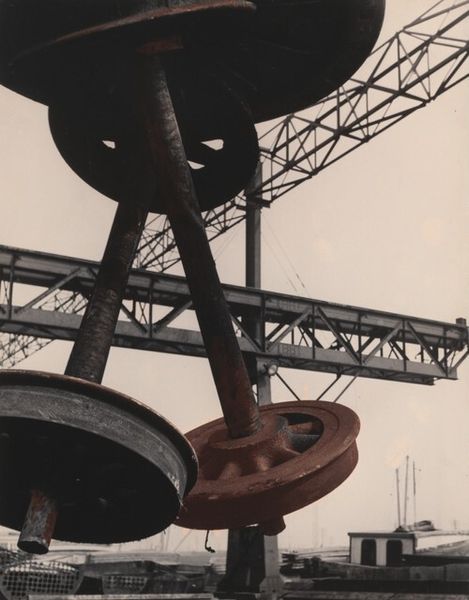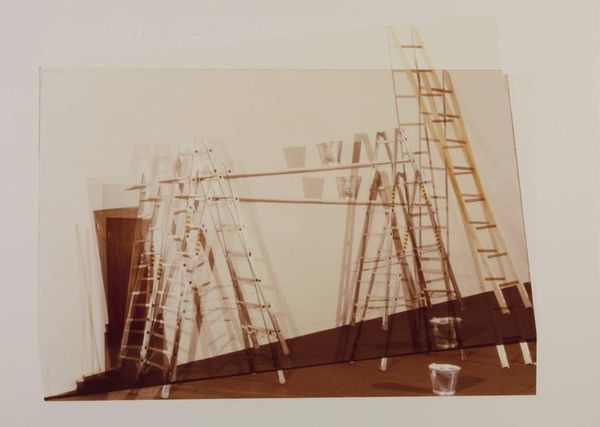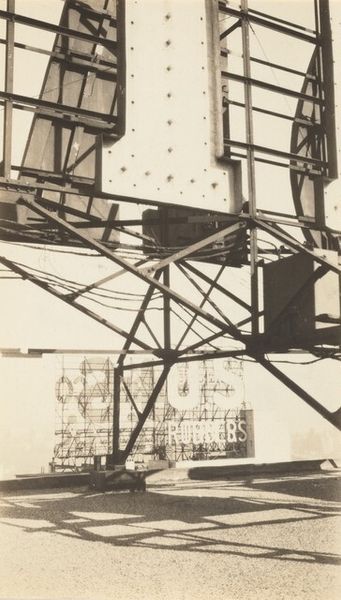
photography, gelatin-silver-print
#
precisionism
#
black and white photography
#
landscape
#
outdoor photograph
#
photography
#
black and white
#
gelatin-silver-print
#
monochrome photography
#
cityscape
#
monochrome
Dimensions: sheet: 10.4 x 6 cm (4 1/8 x 2 3/8 in.)
Copyright: National Gallery of Art: CC0 1.0
Curator: So here we have Walker Evans' "Coney Island, New York" taken around 1928 or 1929. It's a gelatin-silver print capturing an amusement park scene in stark monochrome. Editor: Immediately, the dizzying heights get to me. The skewed angle emphasizes this precarious feeling with rollercoasters looming above us. A visceral kind of poetry emerges in its geometry! Curator: Precisionism, maybe? Evans was experimenting at the time. The focus is razor sharp and technical, emphasizing the structural elements, almost celebrating the manufactured landscape, though there's certainly a grittiness too. Look at the signs: 'Fare 10 cents.' The everyday intruding into our leisure space. Editor: Ten cents for the ride of your life or maybe for a chance to win a prize playing a ring toss, considering the structure partially blocking our view is angled such that we read "rings" instead of whatever the full word it forms. What strikes me are the visible bolts, joints and braces, not glossed over. These pieces signify labor, a very different perspective than that of carefree riders above! Curator: Exactly. These stark structures, all intersecting lines and curves, possess an inherent sadness. It feels like looking back at lost dreams, an era captured just before the Depression truly hit. This photograph becomes not just a study of form but of the precariousness of modern life, and an artifact showcasing that very reality, now nearly a hundred years in the past! Editor: In a time defined by the rise of machines and mass production, photography becomes this ideal medium to immortalize modern American society in all its flawed glory. I am struck by its power to elicit emotion from these inanimate iron giants and all their tiny incandescent bulbs, promising amusement in exchange for one’s meager savings. Curator: Ultimately, I’m left with this uneasy balance—excitement interwoven with this subtle sense of fragility. An innocent glimpse of modernity, now laden with the wisdom of retrospect. Editor: And all thanks to accessible materials and an aesthetic shaped by, well, the ten cents and metal infrastructure on display. It prompts us to ponder what histories lie latent in objects of recreation!
Comments
No comments
Be the first to comment and join the conversation on the ultimate creative platform.
